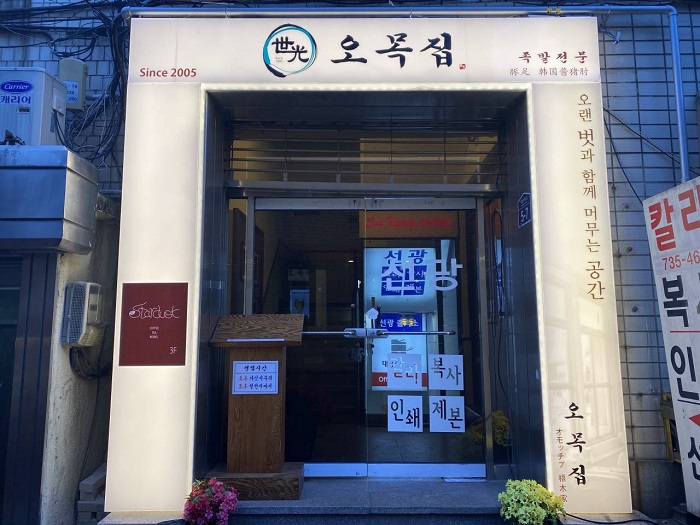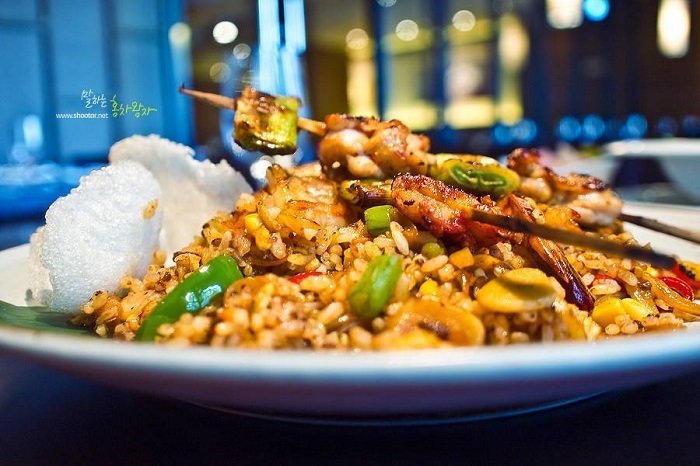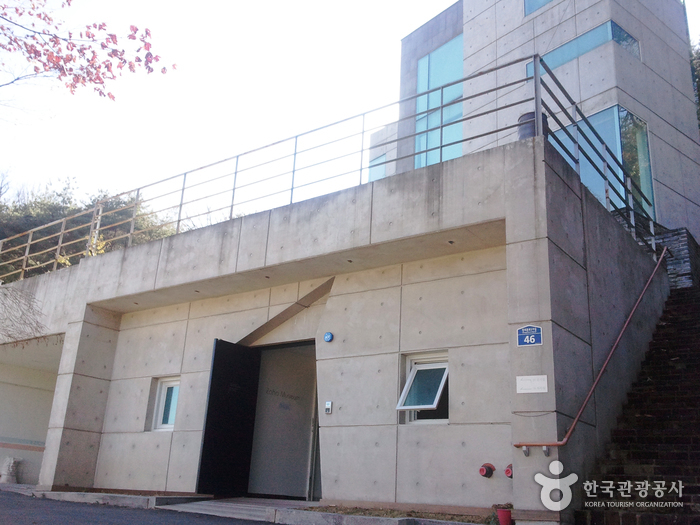Omokjip Sejong Center for the Performing Arts(오목집 세종문화회관)
9.9Km 2020-11-20
5-7 Saemunan-ro 5-gil Jongno-gu Seoul
+82-2-722-6882
It is a good store for office worker's group dinners. This restaurant's signature menu is braised pigs' feet. This Korean dishes restaurant is located in Jongno-gu, Seoul.
ITALASIAN (이딸라시안)
9.9Km 2021-08-09
91, Saemunan-ro, Jongno-gu, Seoul
+82-2-733-2272
It is a restaurant known for its large servings. This restaurant's signature menu is spaghetti. This Korean dishes restaurant is located in Jongno-gu, Seoul.
Homeplus Express - Gwanghwamun Branch [Tax Refund Shop] (홈플러스익스프레스 광화문)
9.9Km 2024-04-18
91, Saemunan-ro, Jongno-gu, Seoul
-
Zaha Museum (자하미술관)
9.9Km 2021-03-09
46, Changuimun-ro 5ga-gil, Jongno-gu, Seoul
+82-2-395-3222
Located in Buam-dong, Jongno-gu, Zaha Museum is the highest art gallery in Seoul. Reaching
the museum involves a bit of an uphill walk, but the breathtaking scenery that includes Bugaksan Mountain and Inwangsan Mountain makes it worth the effort.
Opened on March 1, 2008, the two-story museum exhibits experimental works of young artists. There are two exhibition halls and a small garden on the second floor with a great view of the mountains.
V Spa - Lotte Avenuel Branch [Tax Refund Shop] (브이스파 롯데에비뉴엘)
9.9Km 2024-04-18
10F, 73, Namdaemun-ro, Jung-gu, Seoul
-
CH Carolina Herrera - Avenuel Branch [Tax Refund Shop] (CH캐롤리나헤레라 에비뉴엘)
9.9Km 2024-04-19
4F Lotte Department Store Main Branch AVENUEL, 73, Namdaemun-ro, Jung-gu, Seoul
-
BVLGARI - Lotte Avenuel Branch [Tax Refund Shop] (불가리 롯데 에비뉴엘점)
9.9Km 2024-04-18
73, Namdaemun-ro, Jung-gu, Seoul
-
Cartier - Lotte Avenuel Branch [Tax Refund Shop] (까르띠에 롯데에비뉴엘점)
9.9Km 2024-04-23
124, Singomae-ro, Giheung-gu, Yongin-si, Gyeonggi-do
-
Burberry - Lotte Avenuel Branch [Tax Refund Shop] (버버리 롯데 에비뉴엘점)
9.9Km 2024-04-18
73, Namdaemun-ro, Jung-gu, Seoul
-
Piaget - Lotte Avenuel Branch [Tax Refund Shop] (피아제 롯데 에비뉴엘점)
9.9Km 2024-04-18
73, Namdaemun-ro, Jung-gu, Seoul
-




![V Spa - Lotte Avenuel Branch [Tax Refund Shop] (브이스파 롯데에비뉴엘)](http://tong.visitkorea.or.kr/cms/resource/04/2888404_image2_1.jpg)
![CH Carolina Herrera - Avenuel Branch [Tax Refund Shop] (CH캐롤리나헤레라 에비뉴엘)](http://tong.visitkorea.or.kr/cms/resource/07/2888707_image2_1.jpg)
![BVLGARI - Lotte Avenuel Branch [Tax Refund Shop] (불가리 롯데 에비뉴엘점)](http://tong.visitkorea.or.kr/cms/resource/58/2889758_image2_1.jpg)
![Cartier - Lotte Avenuel Branch [Tax Refund Shop] (까르띠에 롯데에비뉴엘점)](http://tong.visitkorea.or.kr/cms/resource/88/2889788_image2_1.jpg)
![Burberry - Lotte Avenuel Branch [Tax Refund Shop] (버버리 롯데 에비뉴엘점)](http://tong.visitkorea.or.kr/cms/resource/29/2889829_image2_1.jpg)
![Piaget - Lotte Avenuel Branch [Tax Refund Shop] (피아제 롯데 에비뉴엘점)](http://tong.visitkorea.or.kr/cms/resource/72/2889872_image2_1.jpg)
 English
English
 한국어
한국어 日本語
日本語 中文(简体)
中文(简体) Deutsch
Deutsch Français
Français Español
Español Русский
Русский